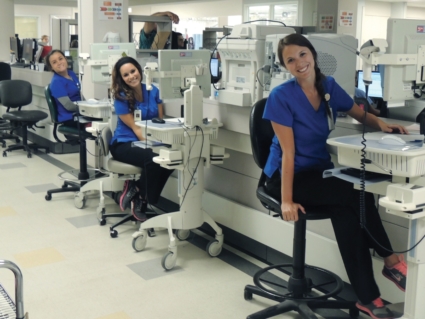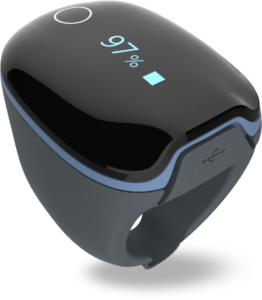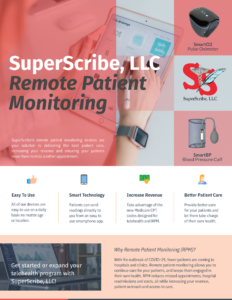Author Archives: Katie Grubbs
SuperScribe, LLC Spring 2022 Newsletter
SuperScribe, LLC Winter 2021 Newsletter
SuperScribe, LLC Fall 2021 Newsletter
SuperScribe has been moving right along and staying busy throughout the fall with new scribes being added every month!.
We’re all working hard to keep on top of all the adjustments to schedules, scribes being accepted into their respective medical schools, and a world with COVID-19 slowing down. See what’s new with our most recent newsletter!
What are medical scribes and how can they help healthcare providers?

So first, what are medical scribes?
Medical scribes are essentially live transcriptionists for healthcare providers that document patient encounters.
Typically, medical scribes are college students or recent graduates that in their gap year and focused on a career in healthcare. College students are typically looking for more experience in healthcare as they have a current vision of the field they want to enter, but this usually changes during and after the scribing experience. Recent undergrads have a better idea of the field they want to enter, but this vision can also change, especially when scribing in an emergency department setting. Nothing beats real world experience right?
A little background. The electronic health record (EHR) or electronic medical record (EMR) have been around since the 1970’s in the United States. President Bush was the first to start pushing for more usage of the EHR and President Obama was the first to really use financial leverage as a way to really implement the use of electronic record keeping. Today, nearly every health system and outpatient clinic uses one of the hundreds of different EHR systems that have been developed. Although big players such as EPIC, Cerner, Allscripts, Meditech, and eClinicalWorks get most of the attention, there are a wide variety of smaller systems that are in use by smaller practices. There are nuances to each system, but they all work in a similar fashion.
Healthcare providers are great at what they are trained to do: taking care of patients. However, the implementation of EHR systems threw in a monkey wrench from the old system of using paper notes. It’s a good thing that we moved to a digital system because patient records can be easily accessed by providers and the patient, and patient data can be sent anywhere in a matter of minutes. But this means that providers have to be proficient in using computers/tablets and patient care at the same time. Just picture your provider listening to your heart, then going to type up the info, looking in your ears, typing up that info, and back and forth. Or they are talking to you with their face to the computer while you’re trying to tell them about your chest pain and back soreness.
This is where medical scribes come in. Scribes are there to document the patient encounter so the provider can give his or her 100% full attention to the patient. The provider can genuinely care for the patient, the scribe can document the entire encounter while completing the HPI and ROS, the patient is happier, and more billing points on the chart are completed so the provider can achieve higher reimbursement per patient encounter.
The benefits to using medical scribes
More attention is given to patients
Providers can see more patients throughout the day
Less time is spent on the EHR, leading to less burnout
More billing points can be achieved per patient chart
A new generation of healthcare providers is helped being trained by you
Scribes can be chaperones in specific cases for the opposite sex
You can go home earlier as your charts are completed in live time, and are oftentimes prepped for the next patient
SuperScribe, LLC has been operating throughout Georgia for over ten years, servicing health systems, hospitals, clinics, and independent providers with their medical scribe needs. Whenever the provider is working, we are working too. So this means weekdays, weekends, overnight shifts, and holidays. We handle all the hiring, staffing, scheduling, training (this includes HIPAA, EMTALA, our policies, client policies, EHR use, etc.) so all you have to do as the provider is show up to work with a scribe that’s ready too.
Contact us today at information@superscribellc.com or 770-545-8815 to start or expand your medical scribe program today!
SuperScribe, LLC Summer 2021 Newsletter
SuperScribe has been extremely busy this summer with a flurry of new scribes that have been and are being trained, the RPM program moving towards helping pharmacists with medication monitoring, and patient volumes increasing at our clients’ practices and locations.
We’re all working hard to keep on top of all the adjustments to schedules, scribes being accepted into their respective medical schools, and a world with COVID-19 slowing down. See what’s new with our most recent newsletter!
SuperScribe, LLC Spring 2021 Newsletter
SuperScribe, LLC is excited to start off with a new year! We are continuing to expand our medical scribe program and are pushing forward with remote patient monitoring. You will soon be able to purchase our devices directly from our website!
We thank our clients for all that they do every day and for the support they give to our medical scribes. Our scribes are not only helping our providers with their medical charts and documentation, but are also gaining valuable clinical experience which will help them as they move on to med/PA/nursing school and become exceptional providers.
SuperScribe, LLC Winter 2020 Newsletter
With 2020 wrapping up, it’s time for the SuperScribe, LLC Winter edition of our quarterly newsletter. We’ve done our best to pivot in how we assist our providers throughout the pandemic, and we’re proud that we have been able to do so. Our team has done an exceptional job and their service in their hospitals and clinics has proved to be essential to the sucess of our providers. The link to the PDF of our newsletter can be found right here:
As we move into 2021, we’re excited to continue to be the best medical scribe service provider and remote patient monitoring device supplier in Georgia! As we continue to push forward in healthcare delivery, we look forward to new opportunities and growth!
What is a pulse oximeter and how does it help you?
As we continue to learn more about COVID-19 and its affect on the human body, there are some recurring terms that keep popping up. Pulse oximetry continues to be tossed around, but using it is nothing new to the medical field. Pulse oximetry is the measure of the saturation of oxygen in your blood. The term associated with pulse oximetry is SpO2.
The SmartO2 is SuperScribe’s pulse oximeter, or device to measure SpO2 for you. Traditionally, pulse oximeters are worn on the fingertip where they will either perform a spot check (once) or continuously monitor your blood oxygen level. The continuous monitoring style can be cumbersome and is generally done in the hospital where it is part of a machine that takes other body measurements such as blood pressure, heart rate, ECG, etc. The SmartO2 is innovative due to its ring style that brings continuous monitoring home without all the wires and machines. It’s also noninvasive, which means that nothing goes inside of your body. Pulse oximeters operate by using an infrared light from one side and goes through your finger to another sensor directly opposite of the light emitting sensor. This is completely safe and won’t cause any harm to you. By utilizing Bluetooth technology, the SmartO2 is able to safely and directly connect to your phone or tablet. And results can be emailed to your provider, or uploaded into your EHR via Apple Health, your data remains HIPAA compliant.
The SmartO2 is a ring style, so it can be comfortably worn during the day or overnight. This allows you to monitor your blood oxygen levels over a period of time, which is important because blood oxygen saturation can give you variable readings depending on when, what you’re doing, etc. The SmartO2 has a heart rate monitor and motion monitor, so you can see more of your vitals, especially during resting periods or during sleep. Sleep apnea patients can take advantage of this to see if they are getting enough oxygen while they sleep.
So how else does it help providers? There a few specialities that benefit from understanding pulse oximetry and having that data on hand. Nephrology, pulmonology, cardiology, and oncology can greatly benefit from knowing the SpO2 of their patients. Pertaining to COVID-19, pulse oximetry measurements is invaluable to monitoring patients outside of the hospital. Breathlessness and shortness of breath are common with COVID-19, but hypoxia is also a major concern because a patient could have low blood oxygen levels without feeling the symptoms of shortness of breath. With hospitals reaching maximum bed capacity, letting patients keep track of their health at home saves bed space for non-COVID patients, reduces PPE costs, and lessens travel time/expenses.
View our
SuperScribe expands into Remote Patient Monitoring
SuperScribe, LLC has expanded its healthcare services to include Remote Patient Monitoring! To help address a number of issues that hospitals and providers are facing from the COVID-19 pandemic, SuperScribe’s new RPM program provides a great solution.
It’s no secret that patients have been reducing visits to their PCP’s, coming to the Emergency Room less often, and canceling appointments due to reasons including finances, health-related causes, or time. COVID-19 has made people stay at home and caused clinics to close their doors to the public and taking in only virtual patients. By using our RPM devices, patients can monitor their own vitals at their convenience at any location.
Key advantages for patients to use telemedicine and remote patient monitoring include:
- Increased health and safety as you can stay in your own home
- Reduce travel expenses, including drive time, fuel, and parking fees
- Flexible time to schedule appointments
- Securely send your health information. By emailing only your results, there’s no worry about sharing payment information, social security numbers, or any other highly confidential information.
- Feel connected to your health provider as you are always in communication
- Have a better sense of knowing whether an in-person visit is necessary
Key advantages for hospitals, clinics, and providers include:
- Continue care for your patients outside of the facility
- Monitor your patient’s health and let them know if an in-person visit should be required
- Allow you to care for patients that have logistics issues. For example, patients in rural areas travel much further and spend more on fuel and time.
- Allow you to care for older patients safely in the winter months
- Medicare/MA reimbursement opportunities for using remote patient monitoring services
- Continued care program management for patients outside of the office
- Chronic Care Management eligible
- Reduce hospital readmissions and emergency room visits
- Reduce costs associated with having patients inside of your office. For example, PPE costs, cleaning supplies, cleaning staff fees
Contact Us today to find out more about our remote patient monitoring devices and how they can help providers and patients!


